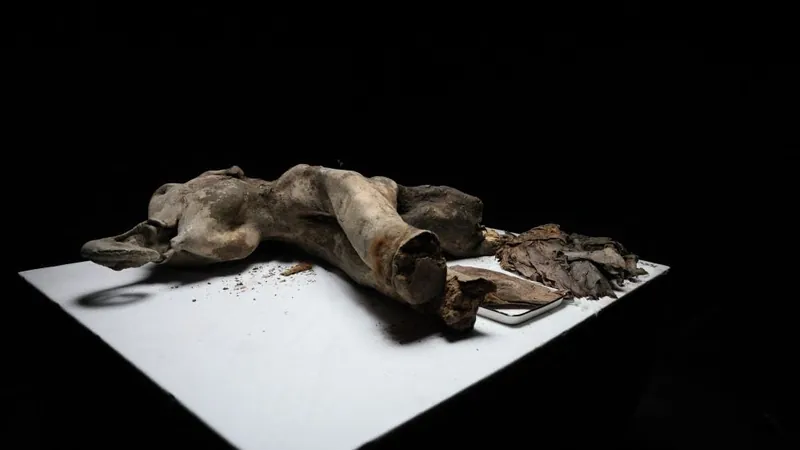
Unearthing the Past: The Astonishing Dissection of a 130,000-Year-Old Baby Mammoth in Russia
2025-04-09
Author: Ming
In the remote Far East of Russia, a team of scientists is unveiling secrets from Earth's ancient past through the meticulous dissection of a remarkably preserved 130,000-year-old baby mammoth, affectionately named Yana after the river basin where her remains were discovered. This extraordinary find offers an unparalleled glimpse into a time long gone, providing critical insights into the prehistoric world.
Yana, who perished as a calf, was found encased in the region's notorious permafrost, which has preserved her remarkably intact. Her reddish-brown hair, smooth skin, and even her trunk are still visible, making her one of the most well-preserved mammoths ever unearthed. The preserved features, including her large eyes and sturdy legs, show similarities to today’s elephants, bringing the Ice Age back to life in vivid detail.
Artemy Goncharov, the head of the Laboratory of Functional Genomics and Proteomics of Microorganisms at the Institute of Experimental Medicine in Saint Petersburg, is leading this groundbreaking research. "This necropsy represents an extraordinary opportunity to unlock knowledge about our planet's history," he stated, underlining the scientific significance of the project.
The scientists intend to scrutinize ancient bacteria and genetic samples from plants and spores identified within Yana's digestive system. This analysis could yield invaluable information regarding the ecosystem she inhabited, offering a window into the climatic conditions and biodiversity of her era. Measuring approximately 1.2 meters (almost four feet) tall at the shoulder and weighing around 180 kilograms (nearly 400 pounds), Yana’s remains are a treasure trove of biological and environmental data.
This dissection took place at the Mammoth Museum at North-Eastern Federal University in Yakutsk, where scientists donned sterile conditions to embark on the delicate process. They have already made fascinating observations, including the preservation of numerous internal organs, which allow for the extraction of vital samples for further study.
One aspect of the research focuses on ancient microorganisms housed within Yana, which could bridge our understanding of evolutionary links to contemporary life forms. In addition to examining Yana’s skin and organ samples, researchers are investigating her reproductive organs to gain deeper insights into the microbial communities that inhabited her body during her life.
Initially believed to have died around 50,000 years ago, recent analyses have shifted this timeline back to over 130,000 years, during a period when no humans roamed Siberia. This means her early demise was unrelated to human activity, which only began in the region between 28,000 to 32,000 years ago.
While Yana’s preservation is a boon for science, it also raises alarms regarding the effects of climate change. The permafrost that has safeguarded such ancient specimens is now at risk of thawing due to global warming. Experts like Goncharov warn that as this frozen ground melts, it could release dormant pathogens into the environment. These pathogens pose potential biological risks not only to ecosystems but could also disrupt human health.
In summary, the dissection of Yana the mammoth is not just a scientific endeavor; it serves as a poignant reminder of the fragile balance our ecosystem maintains, one that is now threatened by the relentless march of climate change. As researchers continue their groundbreaking work, they share a common goal: to learn from the past while safeguarding our future.
 Brasil (PT)
Brasil (PT)
 Canada (EN)
Canada (EN)
 Chile (ES)
Chile (ES)
 Česko (CS)
Česko (CS)
 대한민국 (KO)
대한민국 (KO)
 España (ES)
España (ES)
 France (FR)
France (FR)
 Hong Kong (EN)
Hong Kong (EN)
 Italia (IT)
Italia (IT)
 日本 (JA)
日本 (JA)
 Magyarország (HU)
Magyarország (HU)
 Norge (NO)
Norge (NO)
 Polska (PL)
Polska (PL)
 Schweiz (DE)
Schweiz (DE)
 Singapore (EN)
Singapore (EN)
 Sverige (SV)
Sverige (SV)
 Suomi (FI)
Suomi (FI)
 Türkiye (TR)
Türkiye (TR)
 الإمارات العربية المتحدة (AR)
الإمارات العربية المتحدة (AR)